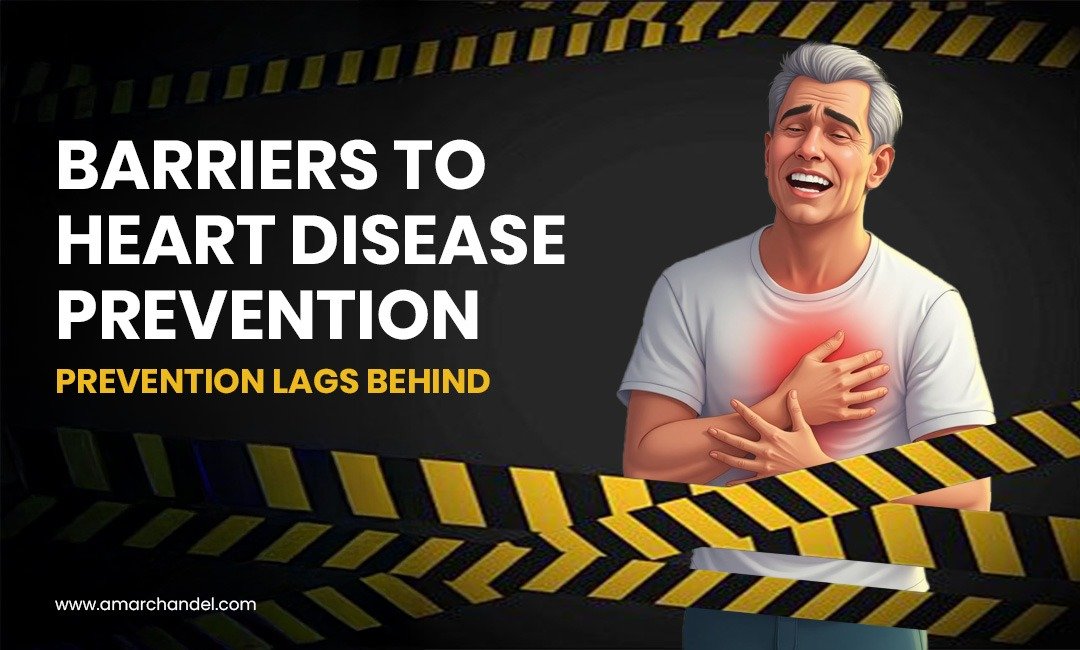In a country where cardiovascular diseases (CVDs) are now the leading cause of death, accounting for 28.1% of total deaths in 2019 alone (as per the ICMR-NCDIR report), one would expect aggressive, preventive action from all corners of the healthcare system. But in practice, preventive cardiology in India remains underutilised, and lifestyle-based interventions are often sidelined in favour of quicker pharmacological approaches.
One of the most common reasons cited by Indian physicians for not emphasising lifestyle change is a lack of time. With crowded OPDs and overburdened schedules, especially in government hospitals, physicians often feel they cannot accommodate dietary counselling within a standard 5–10 minute consultation. But dig deeper, and another surprising reason emerges—doctors assume patients don’t want to change.
A study by Rao et al. (2020) published in the Journal of Clinical and Preventive Cardiology found that physicians often believe patients are unwilling to part with their favourite foods like fried snacks, dairy-rich sweets, and fast food. This assumption becomes a barrier in itself, stopping doctors from even initiating conversations about diet. It’s akin to saying, “I won’t ask my patient to quit smoking because I know they love it.” In reality, many patients are open to change when approached empathetically.
A prevailing myth among both patients and healthcare providers is that adopting a cholesterol-lowering diet means compromising on taste, happiness, and quality of life. But research from the AIIMS Cardiology Department shows otherwise.

A randomised controlled trial conducted at AIIMS (2018) compared two groups of patients with high cholesterol—one group received standard statin treatment, while the other received intensive lifestyle counseling based on a traditional, plant-rich Indian diet (millets, legumes, green leafy vegetables, fruits, and minimal dairy). Not only did the second group show equal or better cholesterol reduction, but they also reported improved mood, digestion, energy levels, and quality of life over 12 weeks. Unlike statins, which often produce no perceivable physical benefit, dietary changes led to visible well-being and satisfaction.
These findings echo international studies, such as the Family Heart Study in the US, which found that those following dietary interventions had lower levels of depression and aggression, along with improved emotional well-being (Ornish et al., American Journal of Cardiology, 1998).
One of the greatest systemic issues in Indian medical practice is the undervaluation of dietary therapy. Despite Indian and global guidelines—including the ICMR-NIN dietary guidelines (2021) and ESC guidelines on CVD prevention (2021)—emphasising diet as the cornerstone of cardiovascular risk reduction, many physicians jump directly to prescriptions. The assumption: “Diet won’t work in real life.”
But this couldn’t be further from the truth. The Framingham Heart Study, one of the world’s most respected longitudinal studies, showed that vegetarians had better cholesterol ratios than even marathon runners. In other words, dietary choices can rival—or exceed—the benefits of intense physical activity or statin drugs (Kannel et al., New England Journal of Medicine, 1999).
Multiple Indian studies have confirmed that whole-food, fibre-rich, vegetarian diets can rapidly reduce cholesterol and other CVD risk factors. For example:
• A 2022 study by Dr. Sunita Varma at PGIMER, Chandigarh, placed patients on a high-fibre, low-fat Indian vegetarian diet (including dalia, fruits, raw salads, and minimal oil). Within just 10 days, patients saw:
• A 25% drop in LDL cholesterol
• A 30–35% improvement in LDL-to-HDL ratio
• Mild weight loss and better bowel movement
This effect is comparable to the cholesterol-lowering effect of statins, but without side effects such as muscle pain or liver enzyme elevation. Further, diet improves other parameters like gut health, insulin sensitivity, and mental well-being—areas where statins offer no benefit.
One major challenge in India is the lack of institutional support for dietary interventions. While we have the data, there’s no systematic integration of dietary counselling in public health programmes like Ayushman Bharat. Moreover, conflicts of interest and commercial food industry influence dilute public messaging.
Many Indian nutritionists, especially in urban settings, continue to promote animal protein and dairy-heavy diets, influenced by Western diet fads. As a result, the public is confused, swinging between keto, high-protein, and zero-carb diets—all of which are either unsustainable or harmful in the long term.
The Food Safety and Standards Authority of India (FSSAI) has taken some steps to issue “Eat Right” messages, but these need to be amplified with stricter regulations, curbs on junk food advertising, and mandatory dietary training for MBBS graduates.
There is no doubt today—dietary and lifestyle interventions are not just preventive but also therapeutic. If a simple, affordable Indian thali with millet, sabzi, dal, and chutney can reduce cholesterol and inflammation in 10 days, why are we waiting?
As per the Lancet Commission on NCDs (2018), 66.9% of India’s NCD burden can be prevented or delayed through lifestyle interventions. Yet, they remain the least prescribed treatment in our medical system.
Doctors must be trained to use food as medicine. Hospitals must offer lifestyle medicine OPDs. And policymakers must push back against junk food marketing with the same aggression as tobacco.
India has the opportunity to lead the world in evidence-based lifestyle cardiology, rooted in our own ancient food wisdom and modern scientific rigor. But it can only happen if we break free from myths, inertia, and the pharmaceutical-first mindset.
References:
1. Rao, M., et al. (2020). Barriers to Preventive Cardiology in India. Journal of Clinical and Preventive Cardiology.
2. Varma, S. (2022). Effect of High-Fiber Indian Diet on Lipid Profile in CVD Patients. PGIMER Chandigarh Clinical Trial Report.
3. Indian Council of Medical Research (ICMR). Dietary Guidelines for Indians, National Institute of Nutrition, Hyderabad, 2021.
4. Ornish, D., et al. (1998). Lifestyle Changes and Heart Disease. American Journal of Cardiology.
5. Kannel WB, et al. (1999). Framingham Study: Diet and Cholesterol Ratios. NEJM.
6. Ministry of Health and Family Welfare. India State-Level Disease Burden Initiative, 2019.
7. FSSAI. Eat Right India Campaign, 2022.
8. The Lancet. NCD Countdown 2030: Tracking Progress, 2018.


Give a Reply